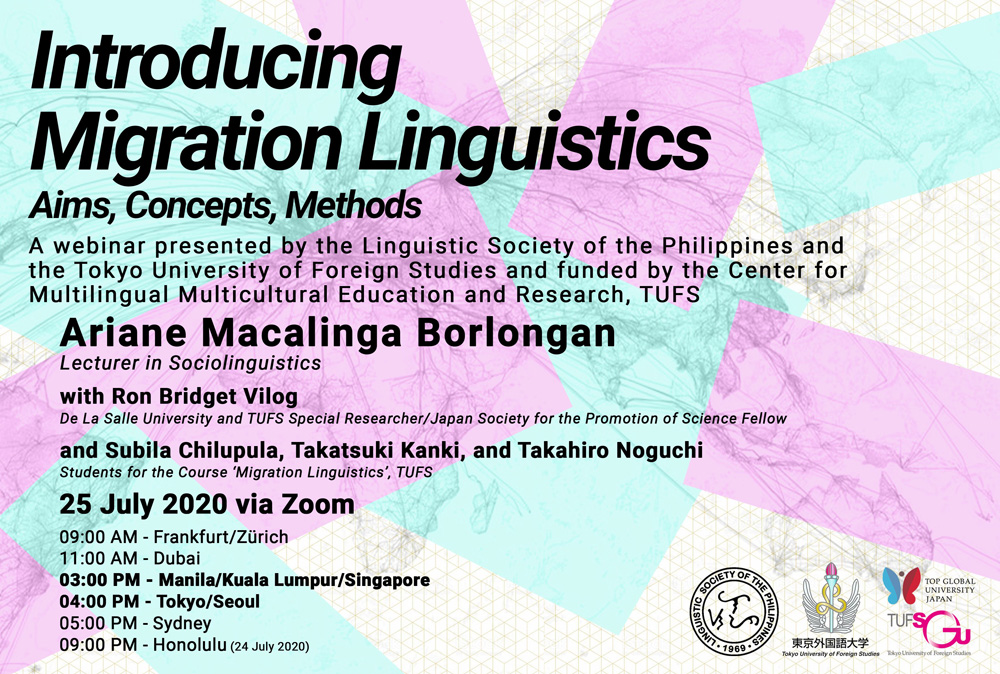Introducing Migration Linguistics: Aims, Concepts, Methodologies
“Migration is an expression of the human aspiration for dignity, safety, and a better future. It is part of the social fabric, part of our very make-up as a human family”, says Ban Ki-moon, former Secretary-General of the United Nations. International migrants alone are 272 million people or roughly 3.5% of the population of the world (International Organization for Migration, 2019). Indeed, human mobility cannot be simply overlooked by the globalizing world, and, needless to say, when people move from one place to another, language is always an important factor and it could either make the movement easy or difficult for the migrant. Language is a crucial aspect of migration and, in the histories of languages of the world, migration has played a pivotal role in shaping their evolution. As such, policy and praxis must be sensitive enough to not only consider but, much more, to take into account language within the migratory experience of peoples. Furthermore, there must be sufficient theory and research which could inform academics specifically and the society at large in the critical role language plays in such a phenomenon. Language and migration have recently been the object of scholarly interest (Canagarajah, 2017) yet it is instructive that such endeavors be integrated as a vibrant sub-field of linguistics which could very be aptly called as ‘migration linguistics’ — the interdisciplinary and multidimensional study of the various aspects of language within the dynamic process of human mobility. What makes the study of language and migration and, thus, the formation of a new sub-field called compelling is the issue it deals with is at the fore of the many social issues the world is dealing with right now and in therefore demands its own theories and approaches, whether derived from other fields or created especially for it, to be able to accurately answer why language could make human mobility a successful or unsuccessful one.
This webinar introduces migration linguistics as a new sub-field in humanities and social sciences. It puts forward the aims of this new sub-field, presents the various concepts in understanding language in the context of migration, and surveys the possible methodologies in doing research in migration linguistics. It also showcases a study and some works in progress within the framework of migration linguistics.
Date / Time
July 25, 2020, 16:00
Speaker
Ariane Macalinga Borlongan with Ron Bridget Vilog
and Subila Chilupula, Takatsuki Kanki, and Takahiro Noguchi
Others
To register, please go to: https://docs.google.com/forms/d/e/1FAIpQLSdxPYpzmOBzvKT7xRTZSs5heZvSXXHnFPywktmNVVbXsF4TWA/viewform
*Lecture is in English only.
*This webinar is presented by the Tokyo University of Foreign Studies and the Linguistic Society of the Philippines and funded by the Center for Multilingual Multicultural Research and Education, TUFS.

